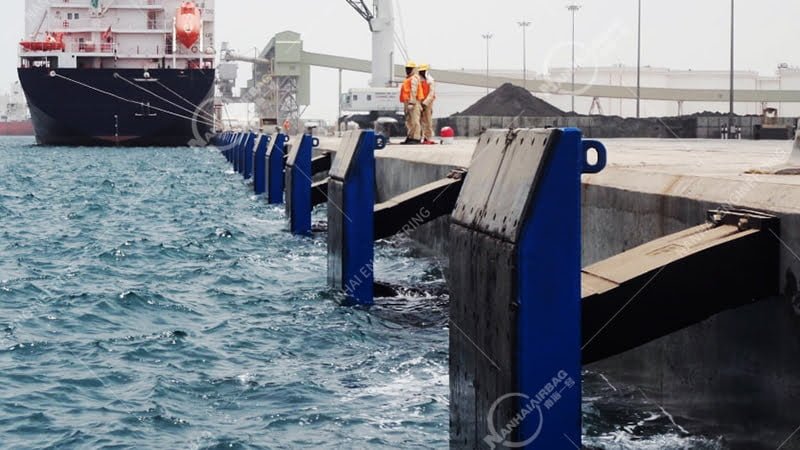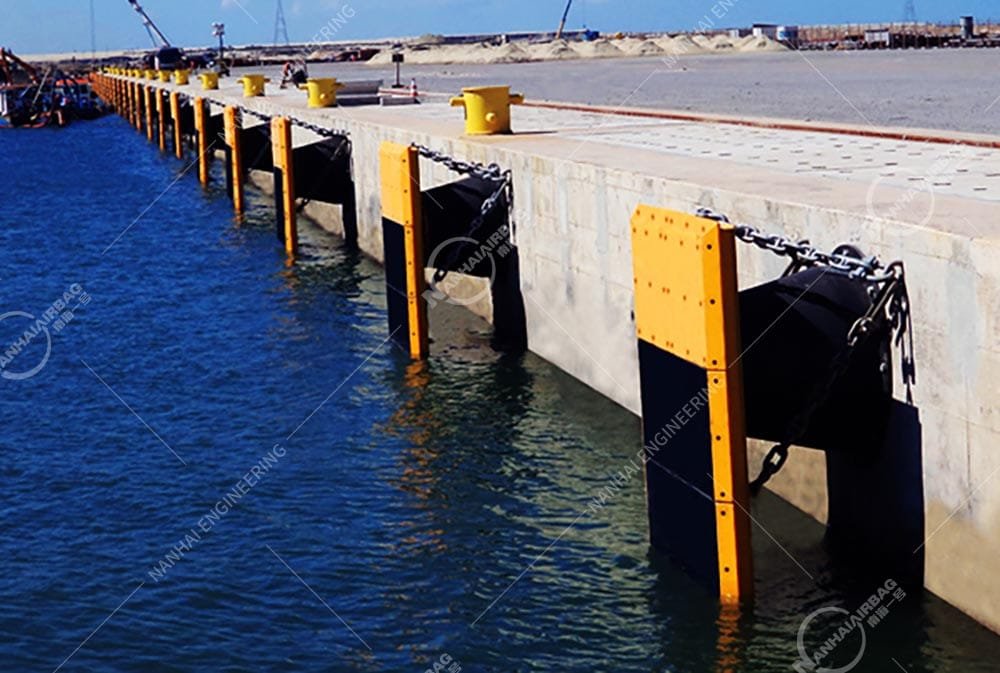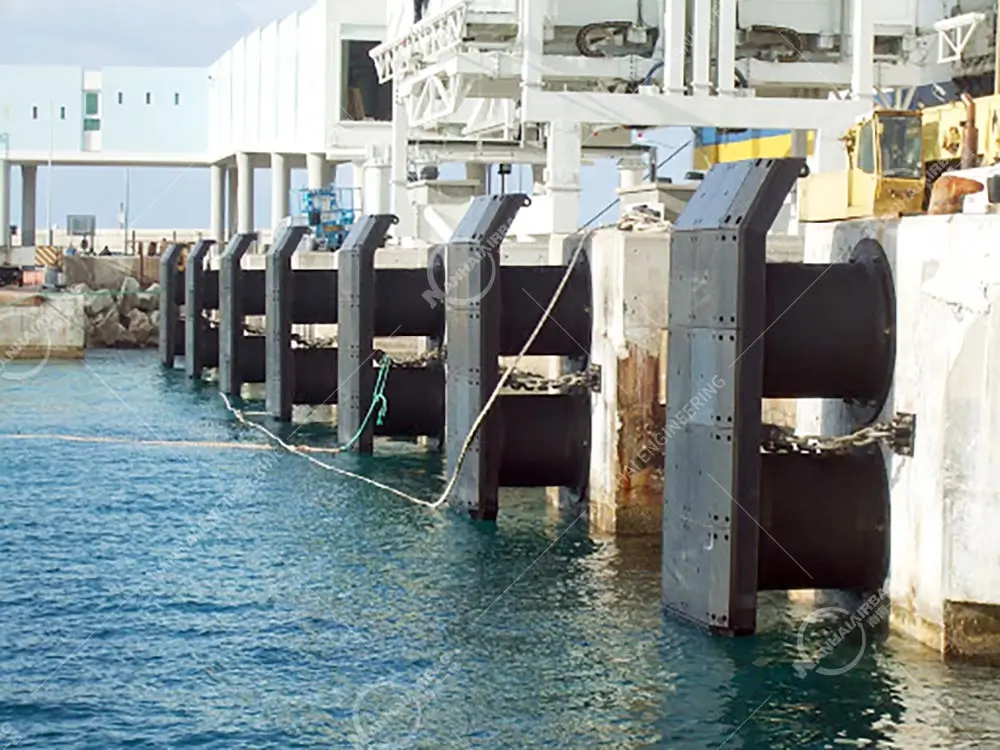نصائح لاختيار المصدات البحرية
07/10/2025لماذا تفضل محطات الرحلات البحرية المصدات المملوءة بالرغوة?
07/10/2025العنصر مقابل المخروطي مقابل الحاجز الخلوي: ما الفرق بينهما؟
اختيار المناسب مصدات مطاطية, المصدات البحريةو مصدات السفن أكثر إلحاحًا مما يدركه الكثيرون. يمكن أن تعاني الموانئ ذات التحولات العالية في المد والجزر أو الرسو بزاوية أو المساحات الضيقة من أضرار مكلفة إذا لم تتوافق المصدات بشكل صحيح مع ظروف الرسو. لقد رأيت ذلك عن كثب: يمكن لسفينة حاويات ترعى رصيفًا بدون نوع المصدات المناسب أن تتسبب في حدوث تأخيرات ودعاوى قضائية وفواتير إصلاح بمئات الآلاف من الدولارات. فهم الاختلافات بين العنصر, مخروطو الخلية يمكن للمصدات أن تنقذ ميناءك - أو تنقذ سلامتك العقلية.
لماذا هذا مهم الآن
سواء كنت تعمل على ترقية البنية التحتية أو إدارة سلامة الأسطول، فإن اختيار الحاجز البحري المناسب يؤثر على طول العمر والتكلفة والأداء. على سبيل المثال، قد يكون الحاجز الخلوي مثاليًا لمحطات البضائع السائبة الثقيلة، ولكن إذا كانت المساحة ضيقة، يمكن أن يوفر الحاجز العنصري حماية مماثلة في مساحة أصغر. تابع القراءة لمعرفة الحل الذي يناسب ملفك الشخصي للرسو ويساعدك على تجنب الأضرار ووقت التعطل.
مقتطفات مميزة
ما هو عنصر الحاجز?
الحاجز العنصري عبارة عن حاجز مطاطي صغير الحجم ومعياري مصنوع من "أرجل مطاطية" مختومة تمتص الطاقة من خلال التشوه. وهي توفر قوة رد فعل منخفضة، وتركيب مرن (أفقي أو رأسي)، وتعمل بشكل جيد في المساحات الضيقة.

ما هو الحاجز المخروطي?
يتميز الحاجز المخروطي الشكل المخروطي المدبب الذي يوفر امتصاصاً عالياً للطاقة وقوة رد فعل منخفضة، خاصةً في حالة الرسو الزاوي. الأنسب للأحواض ذات نطاقات المد والجزر الكبيرة والسفن الثقيلة.

ما هو حاجز الخلية?
الحاجز الخلوي هو عبارة عن وحدة مطاطية أسطوانية مجوفة أسطوانية الشكل معروفة بمتانتها الاستثنائية وامتصاصها العالي للطاقة بأقل قوة رد فعل، وتستخدم على نطاق واسع في محطات الحاويات والنفط.

مقارنة جنباً إلى جنب: العنصر مقابل المخروط مقابل الخلية
| نوع الحاجز | الشكل والبناء | نقاط القوة الرئيسية | حالات الاستخدام المثالية |
|---|---|---|---|
| العنصر | تصميم "ساق" معياري، مدمج | رائعة في المساحات المحدودة، منخفضة الارتداد، مرنة التركيب | الأرصفة الصغيرة، ومراسي زوارق القطر، ومشاريع التعديل التحديثي |
| مخروط | مخروط حاد مدبب مع وسادة كبيرة وعرض قاعدة كبيرة | امتصاص عالي للطاقة؛ مستقر عند الزوايا وتقلبات المد والجزر | الموانئ ذات المد والجزر العالي، وسفن الحاويات، والأرصفة ذات الزوايا |
| الخلية | صدفة أسطوانية ذات مركز مجوف | أعلى متانة؛ توزيع منتظم للحمل | الموانئ التجارية الثقيلة - النفط، والسوائب، ومحطات الغاز الطبيعي المسال |
الأسئلة الشائعة
س: مم تُصنع الرفارف المطاطية؟
المصدات المطاطية - سواء كانت خلية أو مخروطية أو عنصراً - مصبوبة أو مبثوقة من المطاط الطبيعي أو الاصطناعي، مصممة خصيصاً لمقاومة الأشعة فوق البنفسجية والأوزون ومياه البحر.
س: هل يمكنني تركيب مصدات العناصر عمودياً؟
نعم! صُممت مصدات العناصر للتركيب الأفقي أو الرأسي - فهي مثالية للأعمدة أو الأعمدة حيث تكون المساحة محدودة.
س: هل المصدات المخروطية أفضل للرسو بزاوية؟
تتفوق المصدات المخروطية المخروطية المطلقة في الرسو الزاوي بسبب شكلها ووسائدها الكبيرة التي توزع الضغط بالتساوي.
س: هل تدوم المصدات الخلوية لأطول فترة؟
المصدات الخلوية متينة للغاية وتقاوم التآكل بشكل أفضل من العديد من الأنواع الأخرى. وهي مثالية للأرصفة ذات الازدحام الشديد والطاقة العالية.
س: ما هو الحاجز الأفضل لتغيرات المد والجزر العالية؟
يتعامل كل من المصدات المخروطية والخلوية مع تحولات المد والجزر بشكل جيد، ولكن غالباً ما تتفوق المصدات المخروطية في المنشآت المدمجة أو حيث يكون الارتفاع الرأسي في الاعتبار.
فكرة أخيرة
في نانهاي، نحن متخصصون في المصدات البحرية عالية الجودة-مصدات مطاطيةوالهوائية، والمليئة بالهواء المضغوط، والمليئة بالرغوة وغيرها - مصممة وفقًا للمعايير الدولية مثل ISO 17357. سواء كنت تقوم بترقية البنية التحتية الحالية أو تركيب رصيف جديد، فإن مصدات العناصر والمخروطية والخلوية لدينا تقدم حلولاً موثوقة واقتصادية مصممة خصيصًا لتلبية احتياجاتك.
هل أنت جاهز لتحسين إعدادات المراسي الخاصة بك؟ اتصل بشركة NANHAI اليوم للحصول على إرشادات احترافية بشأن اختيار الحاجز المناسب - والحفاظ على سلامة سفنك وفعاليتها.
هل ترغب في الحصول على ورقة مقارنة مجانية أو عينة من اللوحات أو مسح للموقع؟ تواصل معنا الآن ودعنا نجعل بنيتك التحتية تدوم طويلاً.
